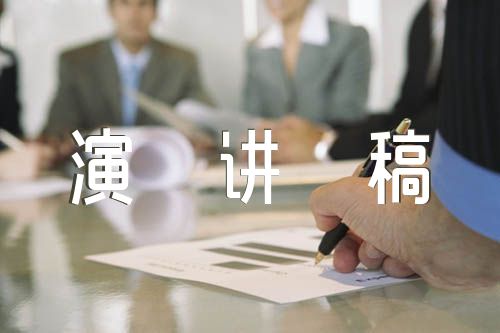last thing, breathing. a problem a lot of us have, certainly, when you're swimming. in freestyle, easiest way to remedy this is to turn with body roll, and just to look at your recovery hand as it enters the water. and that will get you very far. that's it. that's really all you need to know.
languages. material versus method. i, like many people, came to the conclusion that i was terrible at languages. i suffered through spanish for junior high, first year of high school, and the sum total of my knowledge was pretty much, "donde esta el bano?" and i wouldn't even catch the response. a sad state of affairs. then i transferred to a different school sophomore year, and i had a choice of other languages. most of my friends were taking japanese. so i thought why not punish myself? i'll do japanese. six months later i had the chance to go to japan. my teachers assured me, they said, "don't worry. you'll have japanese language classes every day to help you cope. it will be an amazing experience." my first overseas experience in fact. so my parents encouraged me to do it. i left.
i arrived in tokyo. amazing. i couldn't believe i was on the other side of the world. i met my host family. things went quite well i think, all things considered. my first evening, before my first day of school, i said to my mother, very politely, "please wake me up at eight a.m." so, (japanese) but i didn't say (japanese). i said, (japanese). pretty close. but i said, "please rape me at eight a.m." (laughter) you've never seen a more confused japanese woman. (laughter)
i walked in to school. and a teacher came up to me and handed me a piece of paper. i couldn't read any of it -- hieroglyphics, it could have been -- because it was kanji, chinese characters adapted into the japanese language. asked him what this said. and he goes, "ahh, okay okay, eehto, world history, ehh, calculus, traditional japanese." and so on. and so it came to me in waves. there had been something lost in translation. the japanese classes were not japanese instruction classes, per se. they were the normal high school curriculum for japanese students -- the other 4,999 students in the school, who were japanese, besides the american. and that's pretty much my response. (laughter)
and that set me on this panic driven search for the perfect language method. i tried everything. i went to kinokuniya. i tried every possible book, every possible cd. nothing worked until i found this. this is the joyo kanji. this is a tablet rather, or a poster of the 1,945 common-use characters as determined by the ministry of education in 1981. many of the publications in japan limit themselves to these characters, to facilitate literacy -- some are required to. and this became my holy grail, my rosetta stone.
as soon as i focused on this material, i took off. i ended up being able to read asahi shinbu, asahi newspaper, about six months later -- so a total of 11 months later -- and went from japanese i to japanese vi. ended up doing translation work at age 16 when i returned to the u.s., and have continued to apply this material over method approach to close to a dozen languages now. someone who was terrible at languages, and at any given time, speak, read and write five or six. this brings us to the point, which is, it's oftentimes what you do, not how you do it, that is the determining factor. this is the difference between being effective -- doing the right things -- and being efficient -- doing things well whether or not they're important.
you can also do this with grammar. i came up with these six sentences after much experimentation. having a native speaker allow you to deconstruct their grammar, by translating these sentences into past, present, future, will show you subject, object, verb, placement of indirect, direct objects, gender and so forth. from that point, you can then, if you want to, acquire multiple languages, alternate them so there is no interference. we can talk about that if anyone in interested. and now i love languages.
so ballroom dancing, implicit versus explicit -- very important. you might look at me and say, "that guy must be a ballroom dancer." but no, you'd be wrong because my body is very poorly designed for most things -- pretty well designed for lifting heavy rocks perhaps. i used to be much bigger, much more muscular. and so i ended up walking like this. i looked a lot like an orangutan, our close cousins, or the incredible hulk. not very good for ballroom dancing.
i found myself in argentina in XX, decided to watch a tango class -- had no intention of participating. went in, paid my ten pesos, walked up -- 10 women two guys, usually a good ratio. the instructor says, "you are participating." immediately: death sweat. (laughter) fight-or-flight fear sweat, because i tried ballroom dancing in college -- stepped on the girl's foot with my heel. she screamed. i was so concerned with her perception of what i was doing, that it exploded in my face, never to return to the ballroom dancing club. she comes up, and this was her approach, the teacher. "okay, come on, grab me." gorgeous assistant instructor. she was very pissed off that i had pulled her from her advanced practice. so i did my best. i didn't know where to put my hands. and she pulled back, threw down her arms, put them on her hips, turned around and yelled across the room, "this guy is built like a god-damned mountain of muscle, and he's grabbing me like a fucking frenchman," (laughter) which i found encouraging. (laughter) everyone burst into laughter. i was humiliated. she came back. she goes, "come on. i don't have all day." as someone who wrestled since age eight, i proceeded to crush her, "of mice and men" style. and she looked up and said, "now that's better." so i bought a month's worth of classes. (laughter)
and proceeded to look at -- i wanted to set competition so i'd have a deadline -- parkinson's law, the perceived complexity of a task will expand to fill the time you allot it. so i had a very short deadline for a competition. i got a female instructor first, to teach me the female role, the follow, because i wanted to understand the sensitivities and abilities that the follow needed to develop, so i wouldn't have a repeat of college. and then i took an inventory of the characteristics, along with her, of the of the capabilities and elements of different dancers who'd won championships. i interviewed these people because they all taught in buenos aires. i compared the two lists, and what you find is that there is explicitly, expertise they recommended, certain training methods. then there were implicit commonalities that none of them seemed to be practicing. now the protectionism of argentine dance teachers aside, i found this very interesting. so i decided to focus on three of those commonalities. long steps. so a lot of milongueros -- the tango dancers will use very short steps. i found that longer steps were much more elegant. so you can have -- and you can do it in a very small space in fact. secondly, different types of pivots. thirdly, variation in tempo. these seemed to be the three areas that i could exploit to compete if i wanted to comptete against people who'd been practicing for 20 to 30 years.
that photo is of the semi-finals of the buenos aires championships, four months later. then one month later, went to the world championships, made it to the semi-final. and then set a world record, following that, two weeks later. i want you to see part of what i practiced. i'm going to jump forward here. this is the instructor that alicia and i chose for the male lead. his name is gabriel misse. one of the most elegant dancers of his generation, known for his long steps, and his tempo changes and his pivots. alicia, in her own right, very famous. so i think you'll agree, they look quite good together. now what i like about this video is it's actually a video of the first time they ever danced together because of his lead. he had a strong lead. he didn't lead with his chest, which requires you lean forward. i couldn't develop the attributes in my toes, the strength in my feet, to do that. so he uses a lead that focuses on his shoulder girdle and his arm. so he can lift the woman to break her, for example. that's just one benefit of that. so then we broke it down. this would be an example of one pivot. this is a back step pivot. there are many different types. i have hundreds of hours of footage -- all categorized, much like george carlin categorized his comedy. so using my arch-nemesis, spanish, no less, to learn tango.
so fear is your friend. fear is an indicator. sometimes it shows you what you shouldn't do. more often than not it shows you exactly what you should do. and the best results that i've had in life, the most enjoyable times, have all been from asking a simple question: what's the worst that can happen? especially with fears you gained when you were a child. take the analytical frameworks, the capabilities you have, apply them to old fears. apply them to very big dreams.
and when i think of what i fear now, it's very simple. when i imagine my life, what my life would have been like without the educational opportunities that i had, it makes me wonder. i've spent the last two years trying to deconstruct the american public school system, to either fix it or replace it. and have done experiments with about 50,000 students thus far -- built, i'd say, about a half dozen schools, my readers, at this point. and if any of you are interested in that, i would love to speak with you. i know nothing. i'm a beginner. but i ask a lot of questions, and i would love your advice. thank you very much. (applause)











